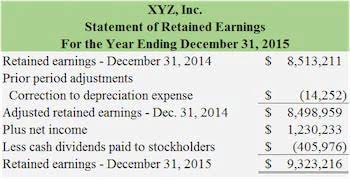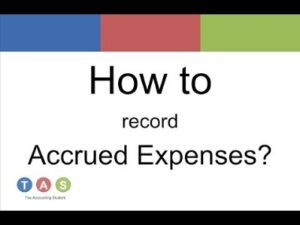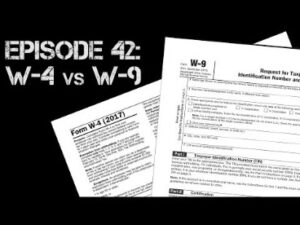Equity, also referred to as net worth, is made up of the assets left over after liabilities are paid. This equity may be held by the owner or shareholders depending on the business structure. Daniel’s experience writing for construction — as well as several clients under an agency — has broadened his knowledge and expertise across multiple subjects. If one chooses to keep hard copies of these, a safe and organized place to put them would be in a filing cabinet.
- For instance, homebuilding contractors often use the completed-contract method because they build in line with specifications and only recognize their income once they sell the house.
- Each job incurs direct and indirect costs that may fall into a wide range of categories.
- Revenue recognition is the process of officially recording how and when your business generates revenue.
- Construction bookkeeping presents unique challenges that can complicate financial management.
- On this difficult path, construction accountants need all the help they can get.
- This category looked at the most common features sought by construction contractors and defined which companies provided them.
Control cashflow, track assets and complete billing and payments in a single system
One of the most important steps in construction accounting is keeping personal and business finances separate. Opening a dedicated business account helps avoid confusion, makes tax reporting easier, and ensures that you have accurate financial records for your business. This separation also simplifies the tracking of income and expenses, making construction bookkeeping more organized and manageable. Managing finances effectively is crucial for general contractors to ensure business success and long-term stability. Construction accounting requires careful attention to detail, as the industry’s unique nature demands accurate tracking of expenses, cash flow, and taxes. Contractors operate their business primarily around projects with billing, production, or labor.
- The installment method is usually used when your client makes payments over time.
- In this guide, we address some of those challenges and cover the basics of construction accounting.
- This is best for any contractor looking for a comprehensive, ready-to-use solution for accounting and project management.
- Accurately tracking costs, revenues, and other financial data creates a foundation for companies to grow and stay cash flow positive.
- For starters, construction accounting tracks multiple projects, accounts, and localities, as opposed to regular accounting — which typically focuses on sectors like retail or manufacturing.
- As a result, you won’t have to worry if you are overdue with payments or if a customer is unhappy with your untimely reports.
Multiple Rates, States & Localities
Among the most popular platforms are Procore and Sage 100 Contractor, which offer a wide range of features and benefits that can streamline various aspects of construction management. The purpose of the Act is to protect local wages from being undercut by out-of-area contractors and construction workers. The Davis-Bacon Act applies to all construction projects under government contracts, including road construction, building construction, renovations, new construction, and painting. Construction payroll and The Significance of Construction Bookkeeping for Streamlining Projects invoicing help ensure accurate, timely payments to construction workers and subcontractors. Since this is the bread and butter of a contracting business, let’s go into more detail.
Tips for bookkeeping for construction companies
Ideally, a construction software that automates some – or all – of your bookkeeping would make running your business a lot easier. Nothing would be worse than losing years of data to a computer crash or natural disaster. It’s smart to have duplicates of all your records in case something like this happens. In many cases, you need to have your financial records for at least three to seven years (varying by state and type of record) so losing them would cause a lot of problems.
Take Control of Your Construction Bookkeeping
Contractors record revenue when and only when they receive payment — and report expenses when and only when they actually pay. Under cash accounting, if money hasn’t changed hands yet, there are no financial transactions to account for. Construction bookkeeping services like software make expense recording easier, though some opt for recording bills in a comprehensive journal. Regardless of your method, documenting materials, job costs, accounts receivables/payables, and other daily transactions is crucial to proper bookkeeping.
- As there must be something to it, let’s examine each principle closely — and then get into the 3 foundational pillars of construction accounting.
- Throughout the project, it’s crucial to regularly adjust estimates based on actual costs and progress.
- An accountant in construction typically ensures that the organization’s financial statements, taxes, and other documents are accurate and up-to-date.
- Together, these documents are considered an “application” for payment because the recipient will have a chance to review the schedule of values and either accept or dispute the billed amount.
- Due to standardized invoicing, tried-and-tested practices, and the language used, AIA billing can speed up payments and reduce the margin of error.
- It is critical to keep accurate records of employee hours worked, including overtime and any other special pay rates.
Budgeting and forecasting are essential for construction companies because they often have large, complex projects that require significant resources. To budget effectively, companies need https://azbigmedia.com/real-estate/commercial-real-estate/construction/how-to-leverage-construction-bookkeeping-to-streamline-financial-control/ to estimate their costs accurately and allocate resources accordingly. Cash flow management is critical for construction companies because they often have large expenses and long payment cycles. To manage cash flow effectively, companies need to track their cash inflows and outflows and forecast their future cash needs. To simplify this process, many construction companies use payroll software that can automatically calculate wages and taxes. These programs can also help with other aspects of payroll management, such as generating pay stubs and handling direct deposits.
Tip #4: Factor in rental or owned equipment
That leaves contractors and construction accountants with a choice of revenue recognition method. Unlock total cost control and visibility with construction finance and accounting software. General contractors should not only focus on current projects but also plan for future growth. Setting financial goals and creating a budget that supports business expansion is key to long-term success. By working with a professional accounting service, you can develop a growth strategy based on sound financial planning and construction bookkeeping principles. So far in this construction company accounting guide, we have covered payrolls, billing, and revenue recognition.
This is one reason it has received several industry awards, including Software Advice’s 2021 Front Runner award and making Capterra’s Shortlist. This cloud-based solution has a base of user interface (UI) customizations, custom workflows, search tools and collaboration features. The next function layer is the Procore analytics feature that works with the specialized app marketplace filled with third-party solutions that integrate with Procore.
The quick ratio measures whether a company can pay its current liabilities with cash or assets that can quickly be converted to cash. To calculate the quick ratio, simply add cash and accounts receivable and divide that sum by current liabilities. Instead, retainage is tracked in separate accounts on the general ledger, typically called retention receivable and retention payable.









